Bream Fishing – Love them or hate them?
If there is one British fish species that divides opinion more than any other, I would say it is the bream. I have long thought of bream as the marmite fish, dividing opinions especially across the different angling disciplines. I am in the ‘love them’ camp and if you seek to differ, with your feet firmly in the ‘hate them’ camp, please allow me a few moments of your time to put my point of view across. So grab a cup of tea and let’s see if I can change your mind!
Picture the scene.
It is the dawn of what promises to be a mild balmy day and you have just settled into a beautiful swim at a familiar lake. Your anticipation is high because past experience has proven that if you prepare properly, and put the effort in, the venue rewards hard work. You spent a little time the previous evening throwing a few balls of your favourite groundbait, laced with chopped worms and a few casters, into a spot just under the willow branches on the far bank, tight up against the island.
Songbirds have been singing their dawn chorus accompaniment for a while now and the sun is just beginning to show above the horizon. Just one other ‘angler’ is in evidence, in the form of a kingfisher which darts by emitting a single ‘peep’ as it streaks past. The thin mist that formed overnight whisps and swirls along the surface of the water, slowly dispersing as the sun warms the day, revealing a slightly dappled surface where capricious winds come and go at will. In the green flat calms, where the winds haven’t taken hold, your excitement rises as tiny bubbles are revealed around where your pre-baiting lies. All over the lake odd dimples appear and increase in diameter, spreading ripples as the surface feeders begin to steal food that has settled overnight.
You reluctantly tear your gaze from this earthly paradise because you are aware of a movement in the corner of your eye. A very slight twitch on your quiver tip alerts all your senses, you tense, and as your anticipation rises you take a deep breath, forcing yourself to be calm as the tip returns gently back into position.
Was that a line bite? A pluck from a small fish? Your heartbeat returns to normal and you settle down to puzzle over the conundrum when your tip gently bends into a beautiful, bold, marvellous curve, and all your daydreaming is over as you lift into a fish.
Smiling inwardly you feel the weight of the fish, it is heavy. Your angling experience tells you to be cautious about this first run… it might be a carp. You tell yourself that if it is a carp then it doesn’t know it’s hooked as it sits there, barely moving. On the other hand if it is a roach then it’s a world record. A solid thump on the line and in a few more seconds the fish reveals itself as it doggedly kites to the side, using its body weight and large flanks to maximum effect. It is your target species, a bream; and a decent one at that.
It takes a minute or two to gain total control because the fish is taking full advantage of its giant side profile, only reluctantly doing your bidding. No wonder they are affectionately known as ‘dustbin lids.’ Moments later the fish hits the surface, rolls on its side and looks firmly into your eyes as it is gently guided towards your waiting landing net. In it goes, all six pounds of it, and you know that even if you don’t have another bite today, this one fish was still worth all the effort. What a result.
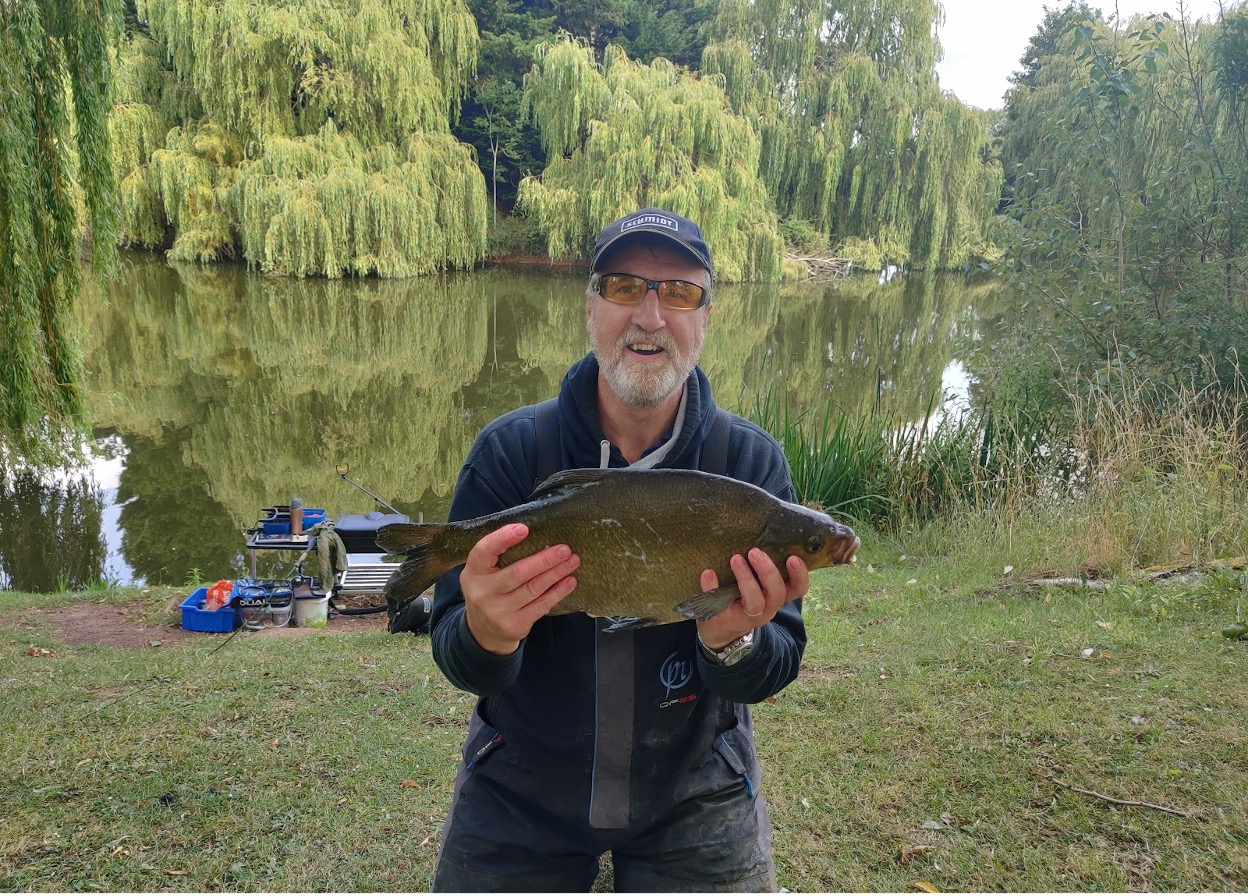
A six pound bream, part of a great catch, on a beautiful day, in a wonderful location. Fishing doesn’t get any better than this, does it?
Bream. Love them or hate them?
My love affair with bream came to the fore in the early 1990s. I organised a party to go to Ireland consisting of myself, my best mate, and four other angling friends. Back then there were no commercial fisheries and the closed season meant the opportunities for fishing from March to June were few and far between. The chance to do ‘the ton’ was a pipe dream in the rest of the UK and a complete week of nothing but fishing was a promise of heaven.
Over several years my friends and I had quite a few ‘tons’ of bream, and when we finally stopped going on our annual trips the world of fishing had changed. Carp fisheries were everywhere and there were now opportunities to catch lots of carp during the closed season instead. Nevertheless, I look back with great fondness on those fun-filled trips in search of bream: a hundred pound of bream is worth a thousand pound of carp, at least to my mind.
Bream versus slime.
There are many anglers who hate bream for the slime they can deposit all over their tackle. Not for nothing are they known as ‘snotties’ by some. A landing net and keep-net smothered in bream slime can be far short of a delight to hose down when you get back home, and your significant other will not appreciate you putting your slimy fishing towel and clothing in with the weekly wash. I must say, even though it doesn’t bother me, I still understand where these anglers are coming from.
However, if this is your sole reason for hating bream, think again. I have caught many slimy roach, and who doesn’t love roach? They are probably the most universally loved fish of all. Tench too can deposit the thickest, impossible-to-remove slime on your landing net. Perhaps the fact that we more often catch tench in small numbers lets them off the hook in many angling eyes?
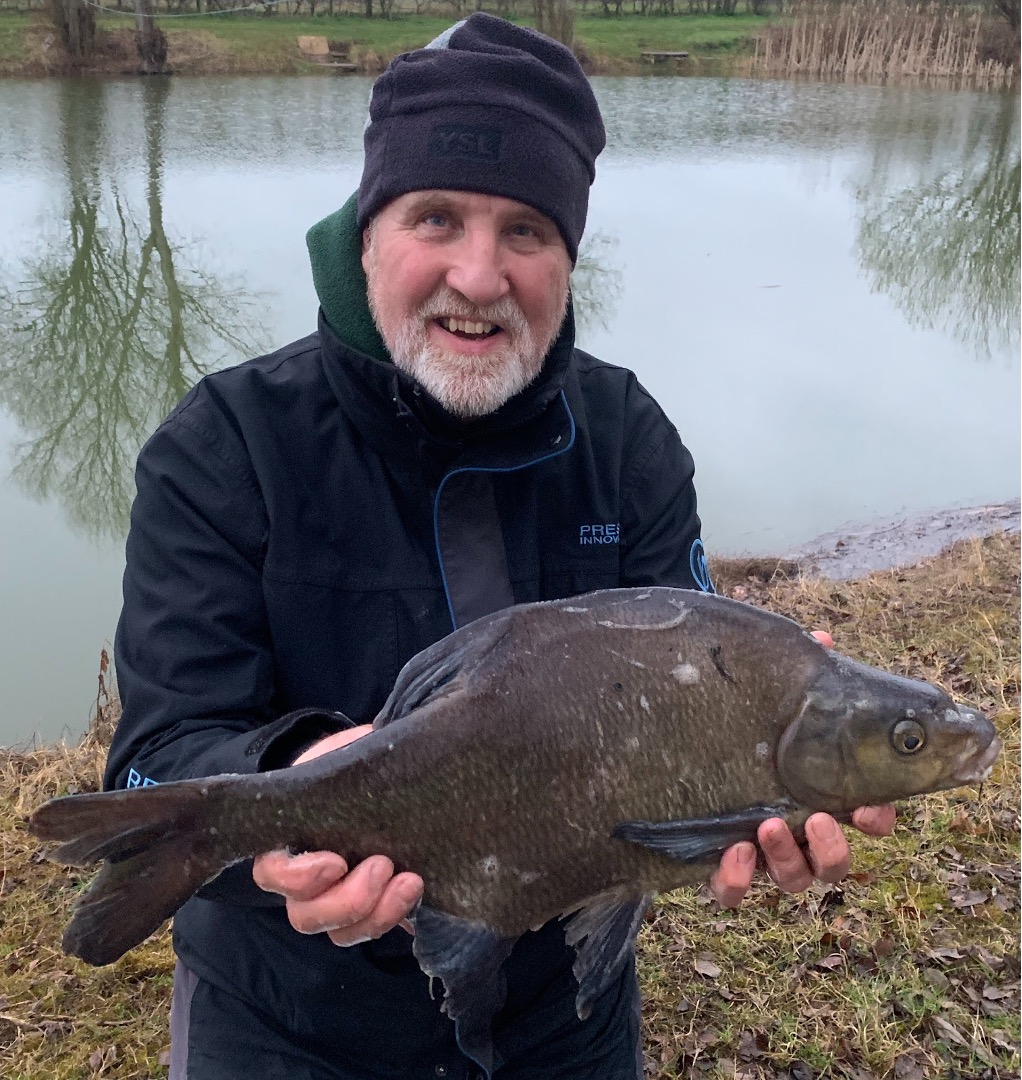
This beautiful old and gnarled bream was caught on a bitterly cold day and the slime on its body can clearly be seen.
Bream versus carp anglers.
In my experience many devoted carp anglers learn to despise bream too. After forking out a small fortune on baits, they then spend hours baiting up a gravel bar on the horizon, sending out hookbaits via a remote control boat, sit for twelve hours waiting for a ‘take’ from one of two named fifty-pound linear mirrors known to frequent the venue, only for a three pound bream to snaffle their 25mm boilie bait at two thirty in the morning, whereupon they must go through the whole rigmarole all over again.
Bream versus barbel anglers.
Other anglers, when disparaging bream, will extol the virtues of fish such as barbel, despising the gentle stately bream simply for the way it fights (or doesn’t fight, depending upon your point of view.) Often being compared to a ‘wet sack’ they are thought to be unworthy opponents because they rarely dart for weedbeds, or scorch away peeling line from the reel, and they seldom shake their head to dislodge the hook.
The case for the defence.
There aren’t many coarse fish that fight like barbel or carp, and both barbel and carp are introduced species specifically stocked for their determination to avoid being landed. Take those two out of the equation and what native British species can regularly exceed four pounds in weight and will happily line up for you to catch thirty of them in one session? (Yes, I hear you calling out “tench, he forgot tench!” but you will be lucky to catch tench all day as they don’t have the reputation for moving in big shoals.)
Bream are weight builders in matches, can grow to terrific proportions for the specimen hunters, and no other native British fish can match those criteria for providing fun. In many ways bream are like the ‘Jersey Cow’ of all the fish species. Happier in a herd, gentle, easily spooked and they really don’t know or exploit their own strength. Who doesn’t love a Jersey cow?
As a ‘dyed in the wool’ former match angler my experience of catching monster bream is very limited, but a net-full of shoal-sized bream is a wonder to behold. Bream elevate themselves further in my mind because they can often be difficult to locate in the first place, especially the better quality ones. A bream shoal in large natural venues will wander over large areas and it can often be hard to pinpoint the best place to fish.
They can be there one day and gone the next. Because bream tend to move in shoals, once you catch one you may expect there will usually be others: although this is generally true, if you keep putting feed in over their heads you will find they are very easy to spook. So if you are too heavy handed or treat them badly the shoal can be lost in an instant, unlikely to return that day.

A big water can often require a little research to locate where the bream might be. Like this angler, fishing deep water and facing into a south-westerly wind is a good starting point.
Are bream difficult to catch?
Back when I was a lad in the 60s and 70s, it used to be thought that bream were a shy elusive species which could be very difficult to catch. This was made harder by the universally perceived thought that bream only flourished in very deep water. Habitually fishing in water deeper than 12’ brought its own difficulties for the average angler. Unless you were competent using a sliding waggler, there was only the feeder option open to you.
Pole ownership was still the preserve of the rich few, so fishing a rod and line with a bait on the bottom was the only method available. The average angler would have swing tips screwed into their ‘built cane’ float rod and set it up just in front of a target board to identify the tiny bites that bream were supposed to give.
Probably due to the improvements in rods and quiver tips, and because poles make it easy to fish in deep water, we now know that bream are not the super shy biting fish that we once thought they were. We also realise that they will flourish in depths of only a few feet and the bream in commercial venues are as obligingly easy to catch as any other species.
How bream have changed their eating habits.
During my trips to Ireland in the 90s I kept a diary of how and what we caught during those holidays. These days I occasionally sift through my paperwork for nostalgia’s sake. Written across the top in big bold letters are the words ‘BREAM LOVE CASTERS!’ This was written to remind me that casters were overwhelmingly the most successful bait that I used in Ireland.
These days, one thing that has definitely changed is the way that bream feed. It was always thought that bream were attracted to natural baits like worms and casters above all others, and also that they liked sweet additives, so groundbaits and flavours had to have some fruity or sugary element. Fishmeal groundbaits were avoided as counterproductive.
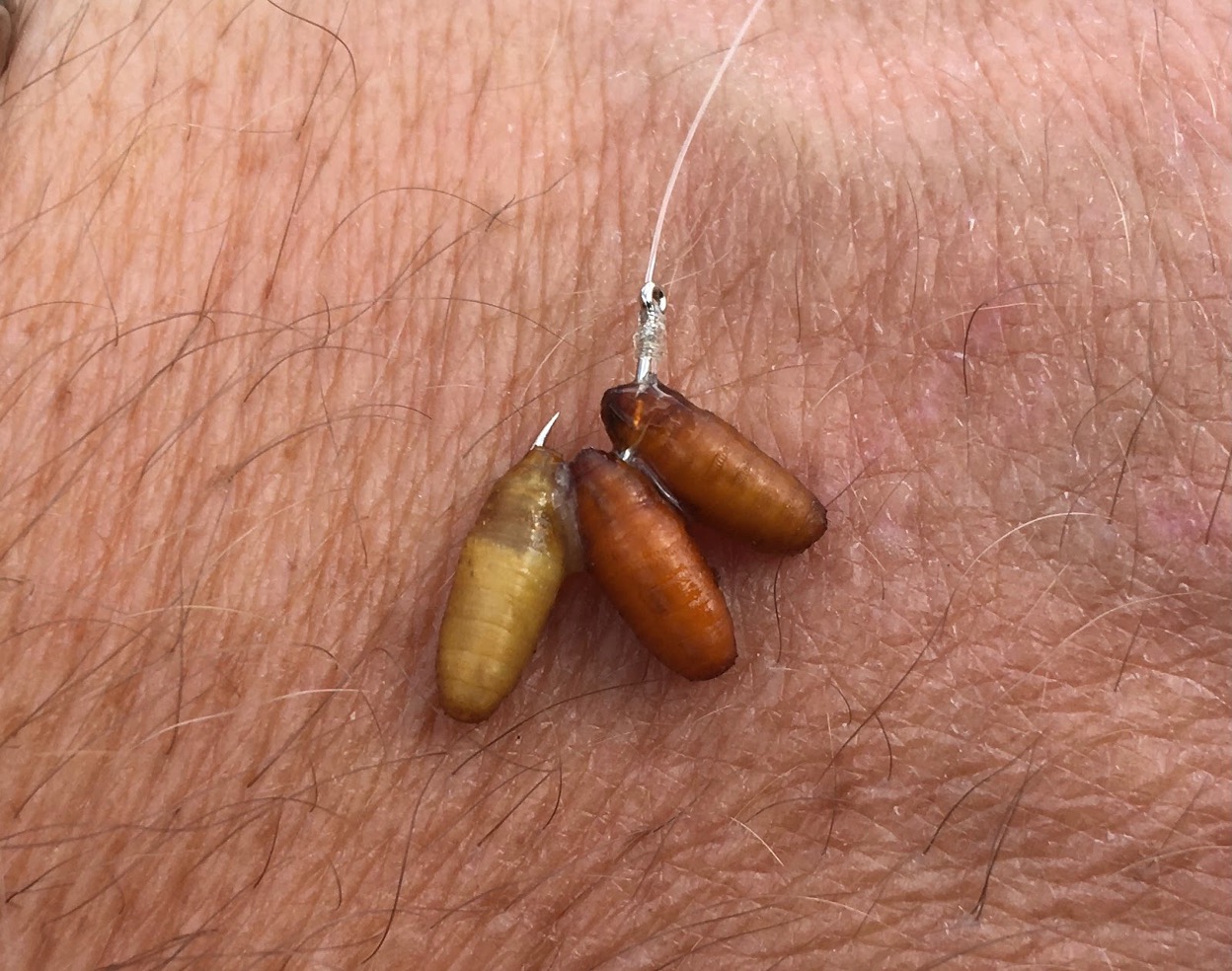
If I had to choose only one bait for targeting bream on a natural venue my choice would be casters, closely followed by red maggots. Both these baits work well on commercials too.
Whilst this preference for casters may still be true in natural waters, especially in places like Ireland, where there is still so much unfished water and there will still be fish that haven’t ever seen an angler’s bait, it no longer bears scrutiny in the modern commercial fishery setting.
Bream have now become exposed to so many anglers using pellets and groundbait, often based around fishmeal, that they can frequently be caught more easily on a pellet with fishmeal groundbait. Let us not forget that casters are increasingly becoming a relatively expensive option, they are generally now used less frequently and so it is no wonder the cash-strapped angler buys the cheaper pellet alternatives.
This feeding preference is now true even on popular stretches of canals and rivers, not just on commercial fisheries. You are as likely to catch a bream on a method feeder packed with micro pellets as you are on a ledgered worm, simply because pellets have become the staple introduction to their habitats. For many fish it is now the most common food they will encounter.
Feeder rods for bream.
I don’t think that there are any particularly specific tackle requirements for bream, though that didn’t stop me from building my own bespoke rod back in the late 80s specifically to target them. Rather brilliantly I put the name of the rod on the side when I finished it – 11’6” Feeder C.P.Smith – what was I thinking?
Happily that rod caught me the fabled ‘ton’ of bream on several occasions in Ireland and it holds a place in my heart. Made entirely of glass fibre and 11’6” long it would fling a groundbait feeder as far as I needed and was beautifully forgiving when striking into, and playing, fish at distance.
For your choice, dear reader, you must also select a rod that will cast your chosen feeder to the distance required; it must be a rod that has sufficient softness in the tip to show up bites as well as being forgiving enough to also land the other smaller fish you may hook whilst targeting bream. Because there is one great variable on very big waters, i.e. the distance you will be fishing at, that’s a tall order for just one rod.
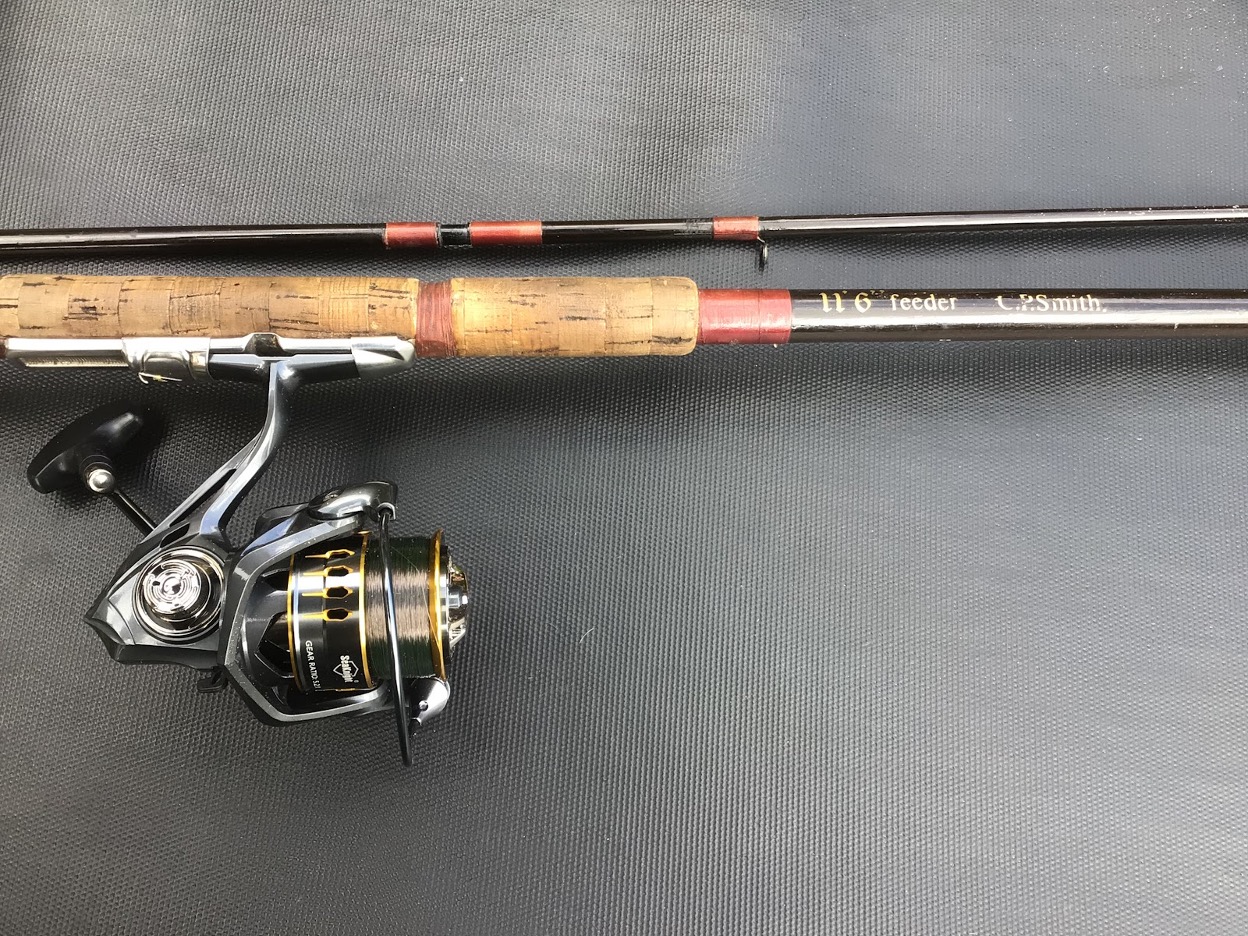
My home-made rod, created in the late 80s, made using a fibre-glass blank. This rod has caught over a thousand lb of bream over the years and is still going strong.
Distance matters.
The right choice of rod lies mostly in the distance you are casting, not with the fish that you are targeting. It takes a rod with a lot of ‘backbone’ to throw a 45 gram feeder 60 metres or more. It takes even more backbone to throw a 120 gram feeder to a 100 metre mark, yet you may be targeting exactly the same fish as if you were using a 9’ rod and flinging a tiny 15 gram feeder just ten metres. I say again, that’s a tall order for one rod. Clearly several rods are needed to cover all eventualities. Many anglers will rarely throw more than 30 metres and even a little 9’ feeder rod might achieve that distance.
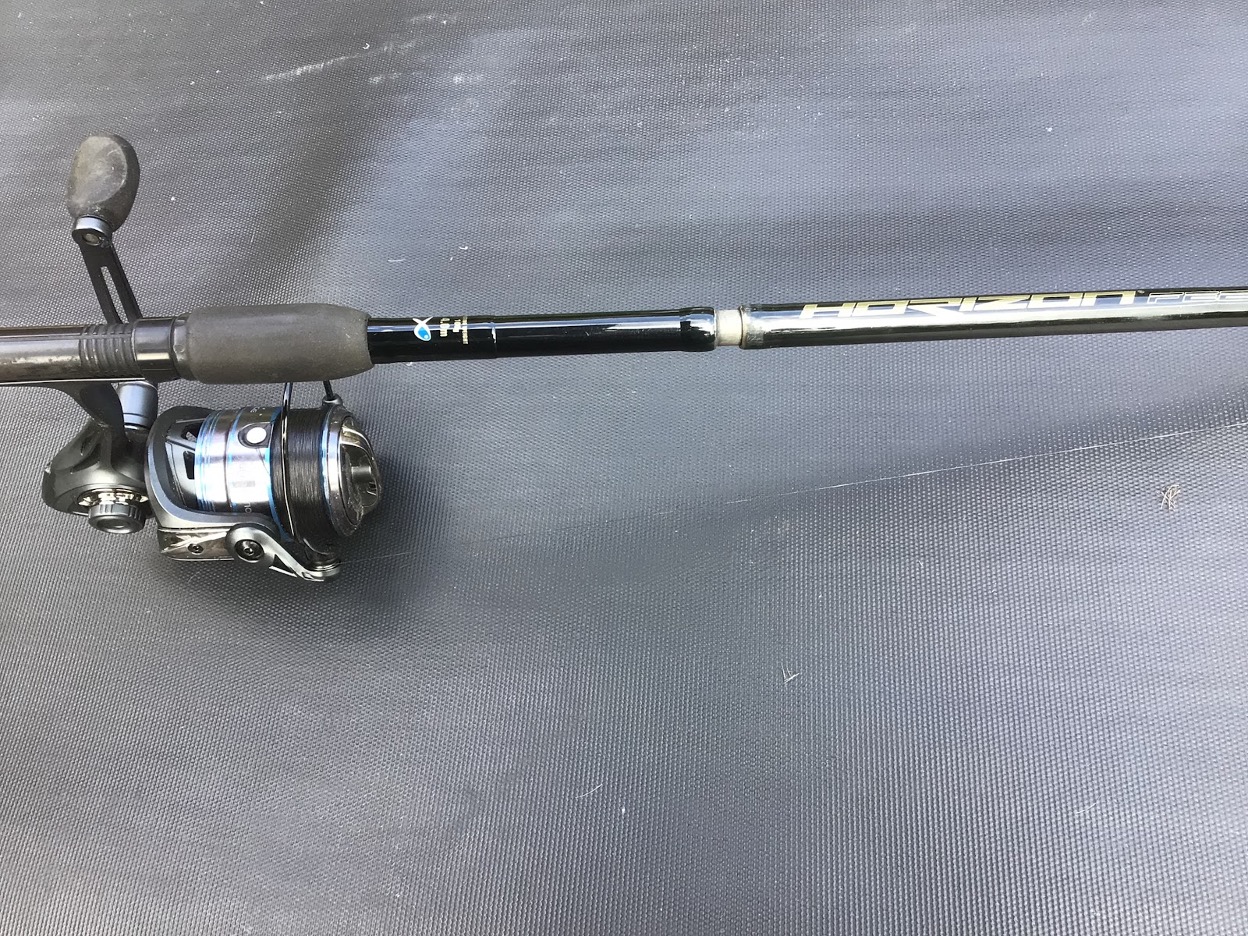
This is my heaviest feeder rod. As the name suggests it is designed to cast a feeder to the horizon (well, almost) and it is rated to up to a 100g casting weight. It is a beast, but there are many even beefier rods out there.
Selecting the right rod for you.
A very stiff rod might throw a long way but may not have the fish playing action required. A very soft rod, conversely, will not cast a great distance. What is needed is a rod with good strength down near the butt but with a softer tip section that can cushion the lunges of the fish. These two attributes must be blended into each other seamlessly so that the rod doesn’t have an obvious transition point where it might ‘lock up’ whilst playing your fish. I am not going to recommend a rod, or even specify a manufacturer of rods to you, but the tremendous advances in carbon fibre technology means that there are plenty of offerings out there to suit every pocket.
Browse the manufacturer’s online catalogues for rods and you should find that they will advise the recommended maximum casting weight and maximum casting distance. All you need to do is consider what kind of venues you will be fishing and what distances you will be casting. You will probably end up with several feeder rods if you are anything like me, hoping to cover all eventualities. Perhaps, also like me, your mates will call you the ‘Tackle Dealer’s Friend’ – after all, it’s only money.
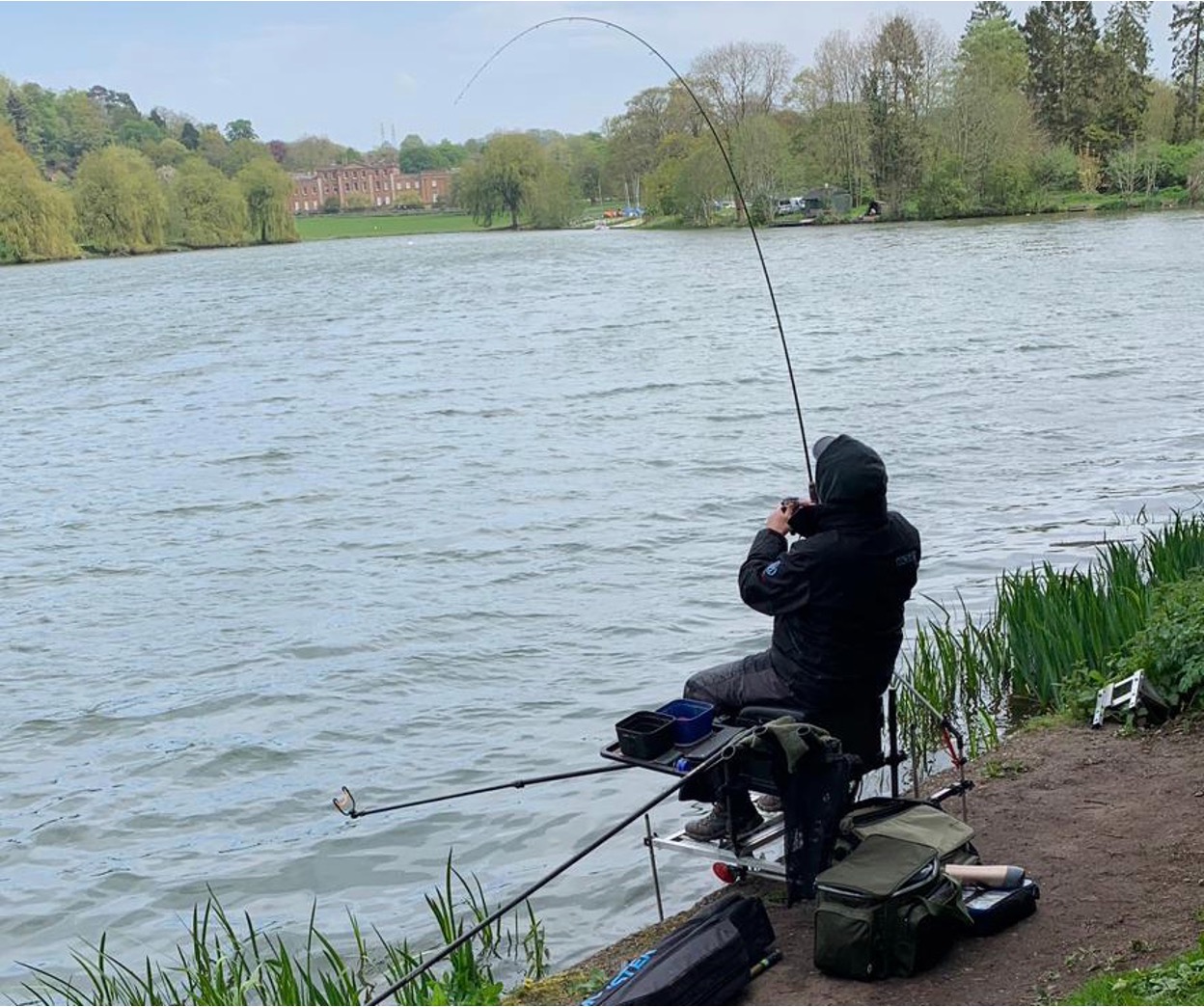
Note the action of this medium feeder rod, another of my own. There is plenty of softness in the tip but it benefits from a strong lower section which enables a cast up to 50 metres with ease. Also clearly demonstrated is the seamless progression from softness to stiffness in the blank. The slimness and lightness of this particular rod makes it a delight to use.
Float rods rod for bream.
A nice float rod is a thing of beauty. Of all disciplines, I think fishing a sliding waggler for bream is the pinnacle of enjoyment and reward when fishing on a natural still water. Having a great rod to fish the slider is the icing on the cake. Although a standard ‘match rod’ can be used (by this I mean a light rod used for catching ‘bits’) there is an argument for a stronger tool. Because a sliding waggler needs to be a heavier float, I would suggest that anglers consider something that is a little beefier. A so-called ‘Specialist rod’, designed for tench or even barbel, will work fine.
A thirteen foot rod is best in my opinion but you can get away with a shorter rod if that is all you have. Happily a thirteen foot Carp Pellet Waggler designed for commercial fisheries fits the bill perfectly and these are now ubiquitous with virtually every manufacturer producing their own versions to suit every pocket.
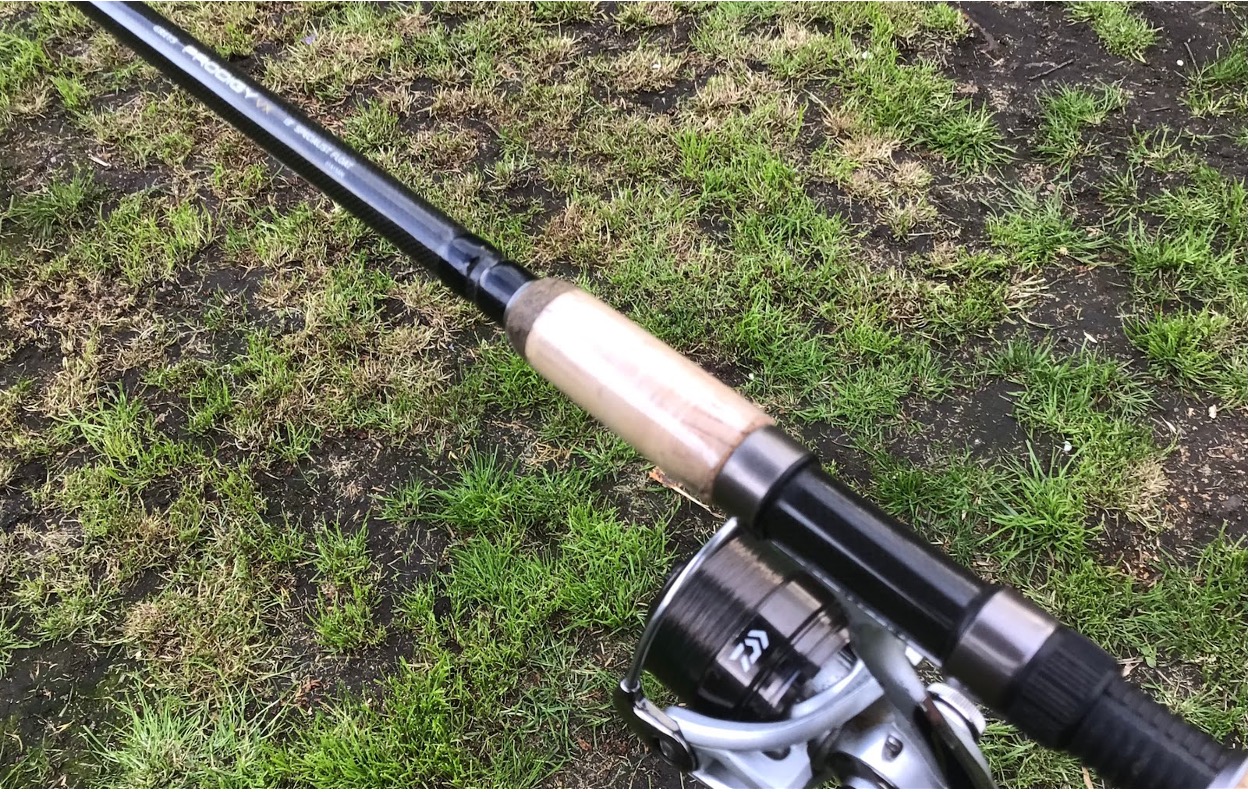
This lovely rod is sold as a ‘Specialist’ rod. At 13’ long it is the perfect length for both normal waggler and sliding waggler fishing. It has the power to cast big floats beautifully as well as to subdue big fish, and yet it has the finesse to land small fish too. Coupled with a reliable 4000 reel it is a combo that can be fished with all day long.
Casting a big bodied antenna float, fished as a slider, out into deep water and watching as first the bulk settles, and then, as each shot registers the float continues to sink incrementally, is one of the most satisfying things that I think anyone can do in fishing. However, not all bream are caught at depth as there are still bream to be caught on shallower waters that are easily fished with a standard waggler. Therefore, on these waters, as long as you are not regularly going to hook bigger fish, virtually any rod will be fine. This is one advantage in the fact that bream do not race off like maniacs.
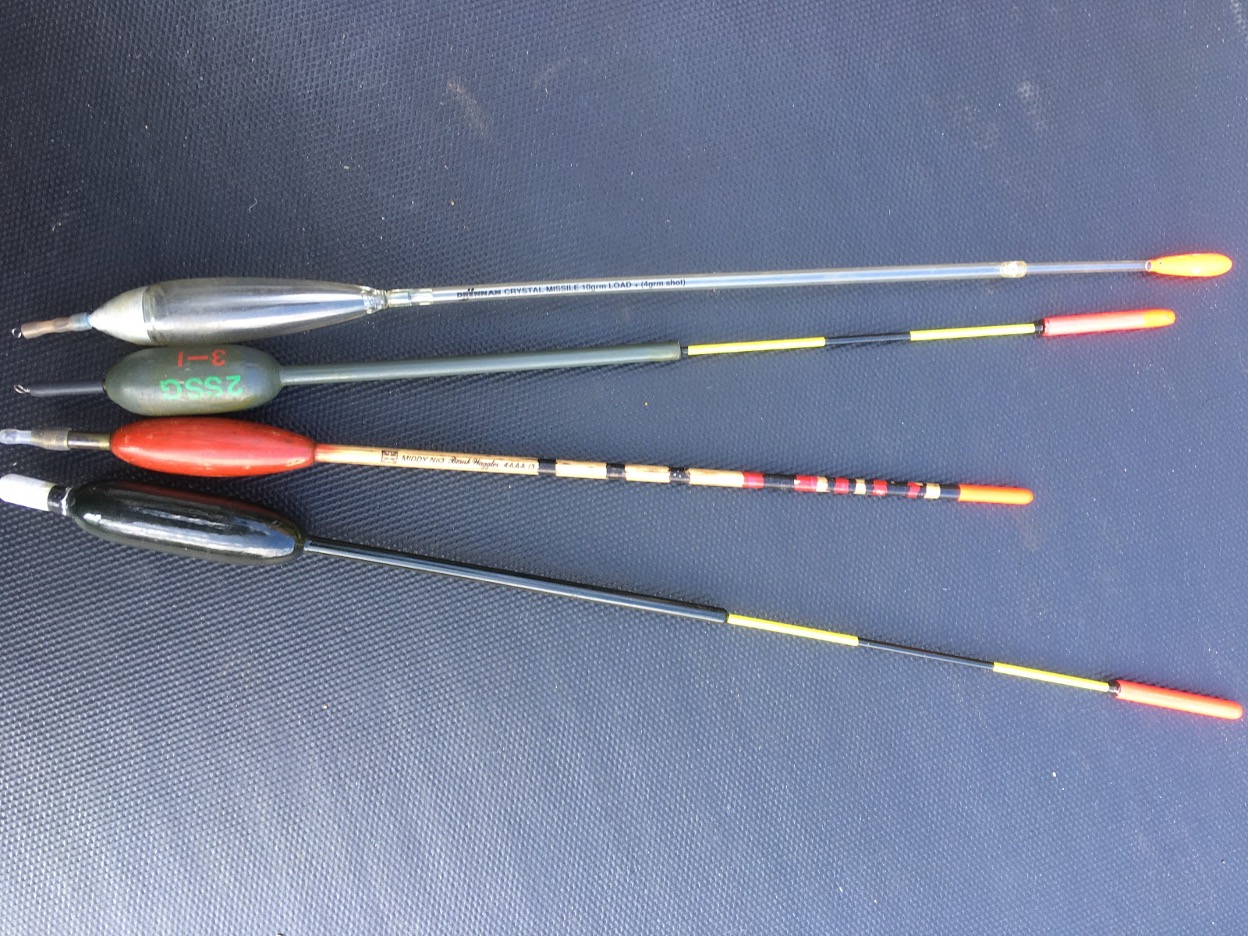
A selection of bigger slider floats. The longest float here is 20” long. It is possible to cast one of these a very long way and they perform beautifully. I once fished a section of the river Shannon with one of these floats and found it was fifty feet deep. Fishing such a big slider, in that depth, on moving water, is a significant test of both tackle and technique. Just getting the sliding knot to the right depth on the line is an enormous challenge, especially because it lies on the reel under 40’ of other line.
More thoughts on float rod choice.
When river fishing, the task of repeatedly casting a waggler, or constantly mending the line as you trot a stick float downstream, is the ultimate test of a float rod. The best rods feel as if they have become an extension to your arm. Fishing a five hour match is hard enough, but going for a pleasure session where you could be holding your float rod all day is very tiring if your rod is too heavy and awkward.
Slider fishing for bream requires marginally less of that bionic symbiosis from your rod, but it is still vitally important. As well as great fish playing action, you will be casting regularly, and to do that you will need a rod that can easily punch a heavy float to your mark but still feels good in the hand.
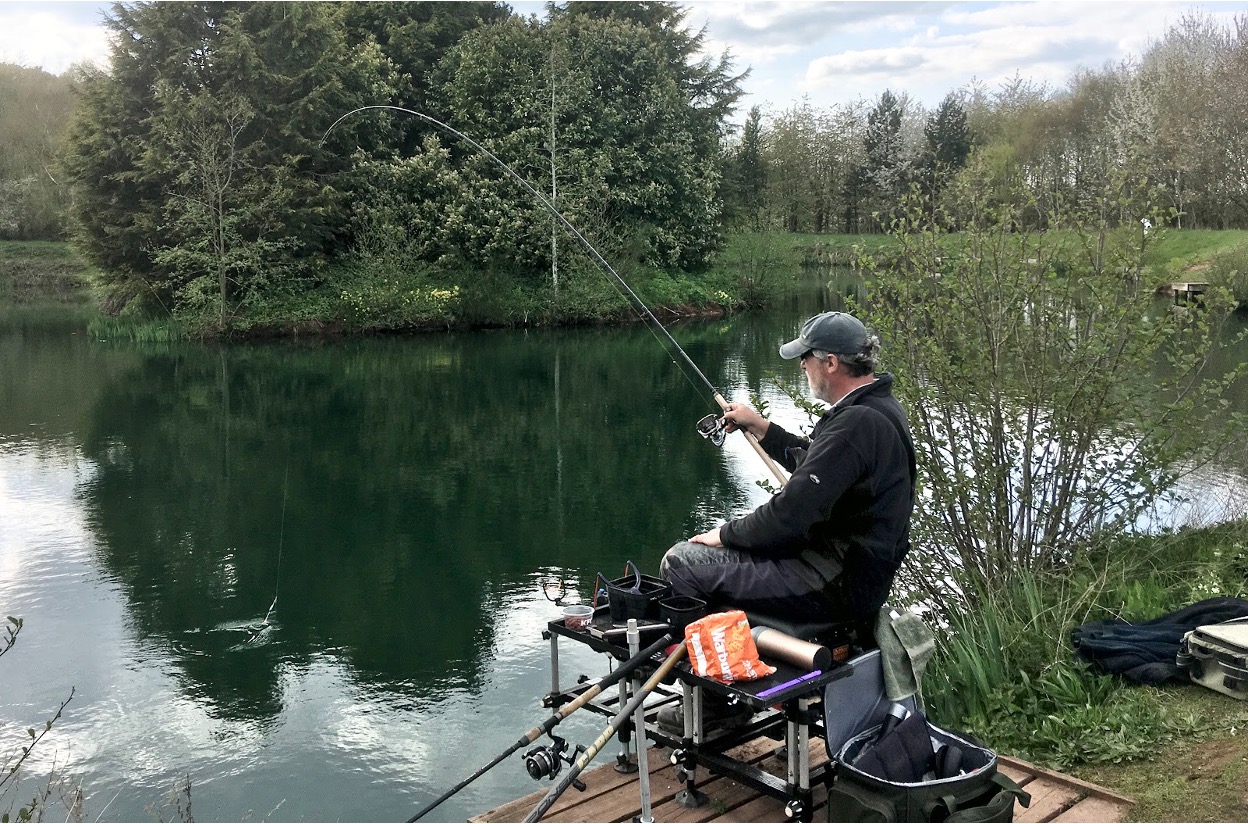
A rod that can be used all day is one of the great advantages of carbon fibre these days. Note the loaf on the side tray too. Bread in all its forms is still one of the best baits for bream. Unfortunately most commercial fisheries do not permit its use.
When casting a heavy slider float all that is required is an easy lob, there must be no punching through with the rod or winding it up into tight compression; that will just put you in all sorts of tangles. The rod must do the work, easily. Because they have a little more ‘backbone’ a pellet waggler or a tench rod will be ideal, as long as you go for at least a 12’ rod. By their very nature these modern rods, though being heavier and slightly less wieldy than a superlight match rod, will still do an admirable job.
Touch ledgering.
One of my favourite ways of bite detection for bream is ‘touch ledgering’. Despite the name it is not only used when you are actually ledgering (i.e. fishing a straight lead) but is a superb method of bite detection when feeder fishing too. Touch ledgering is an antidote to the difficult conditions that can be experienced on very big ‘natural’ waters like reservoirs, English meres, or the loughs in Ireland.
Due to their open vastness the waves on these large waters can be whipped up by the wind and as they lap across in front of you it can be extremely difficult to use a quiver tip. It is a little like fishing an inland sea. The constant bouncing of the tip in response to the waves, and the extra bend that can be created by changes in wind pressure, can make watching a tip all day both difficult and hypnotic. Many times I have looked up, away from my tip, and the world has seemed to spin.
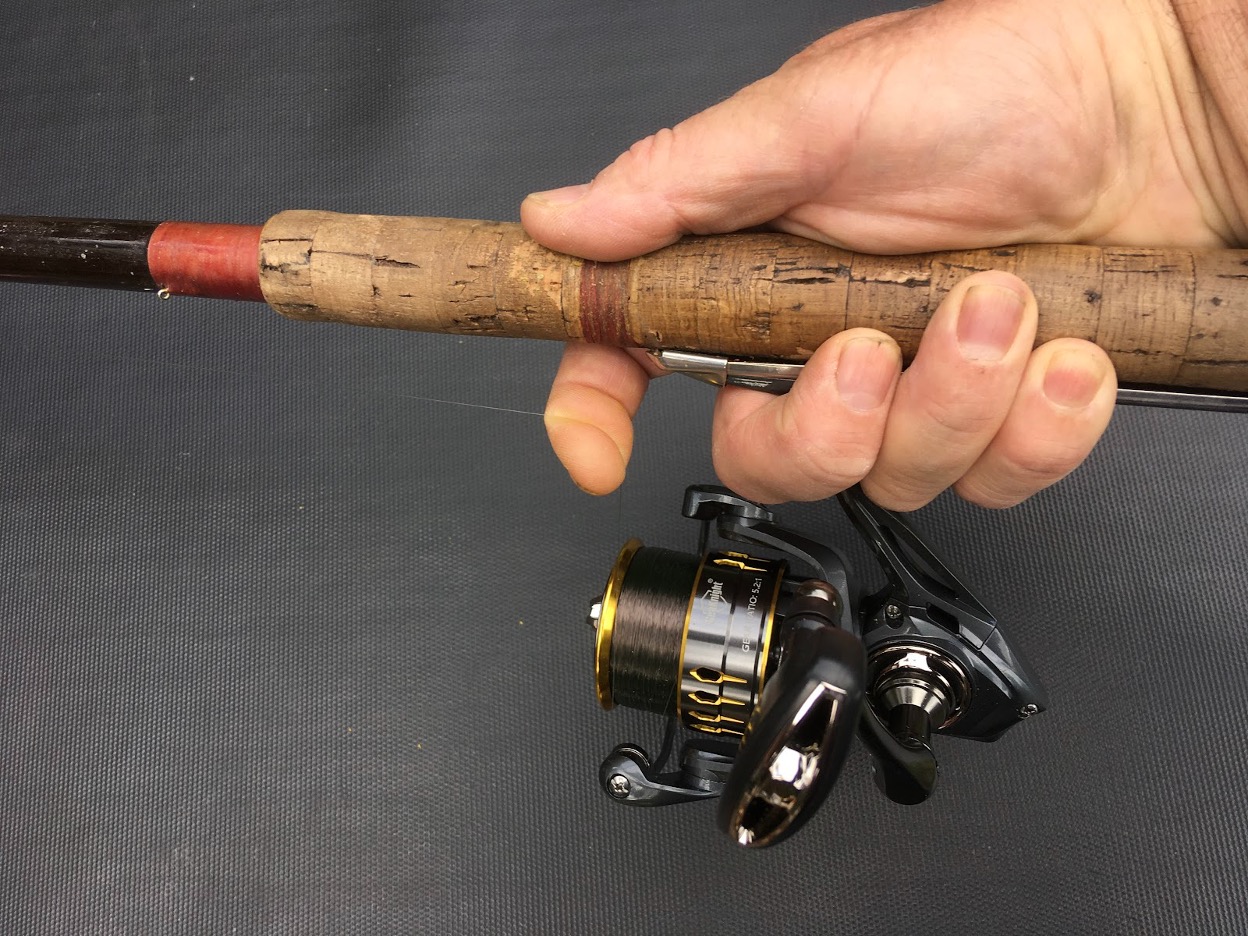
When touch ledgering your hand and finger should be in this sort of position (note the line across the fore-finger). With the rod pointed directly at your bait there is nothing between your finger and the fish. You can be talking to a pal, watching birds fly by, or just taking in the vista, and should any fish pick up your bait you will immediately recognise the feel it creates with your fingertip. It really is a satisfying way to catch anything that swims (I have even caught gudgeon) and I hope you give it a try soon.
To touch ledger you must cast out and set your rod rests so that your rod is pointing straight at where you cast. The tip of your rod must be under water and you should carefully tighten up to your feeder with all of the line sunk beneath the surface. At this point you carefully hold the rod adjacent to the reel and use your index finger to pick up the line coming from the reel. It is extraordinary how sensitive the human finger is and you can soon recognise when there is a genuine pull from a fish.
Because your hand is already holding the rod, you can quickly lift into a fish and your overall reaction time to a bite is improved. The real benefits are that you can still detect bites even if it is blowing a hooley and you can also gaze around you, taking in your surroundings, which increases the overall pleasure.
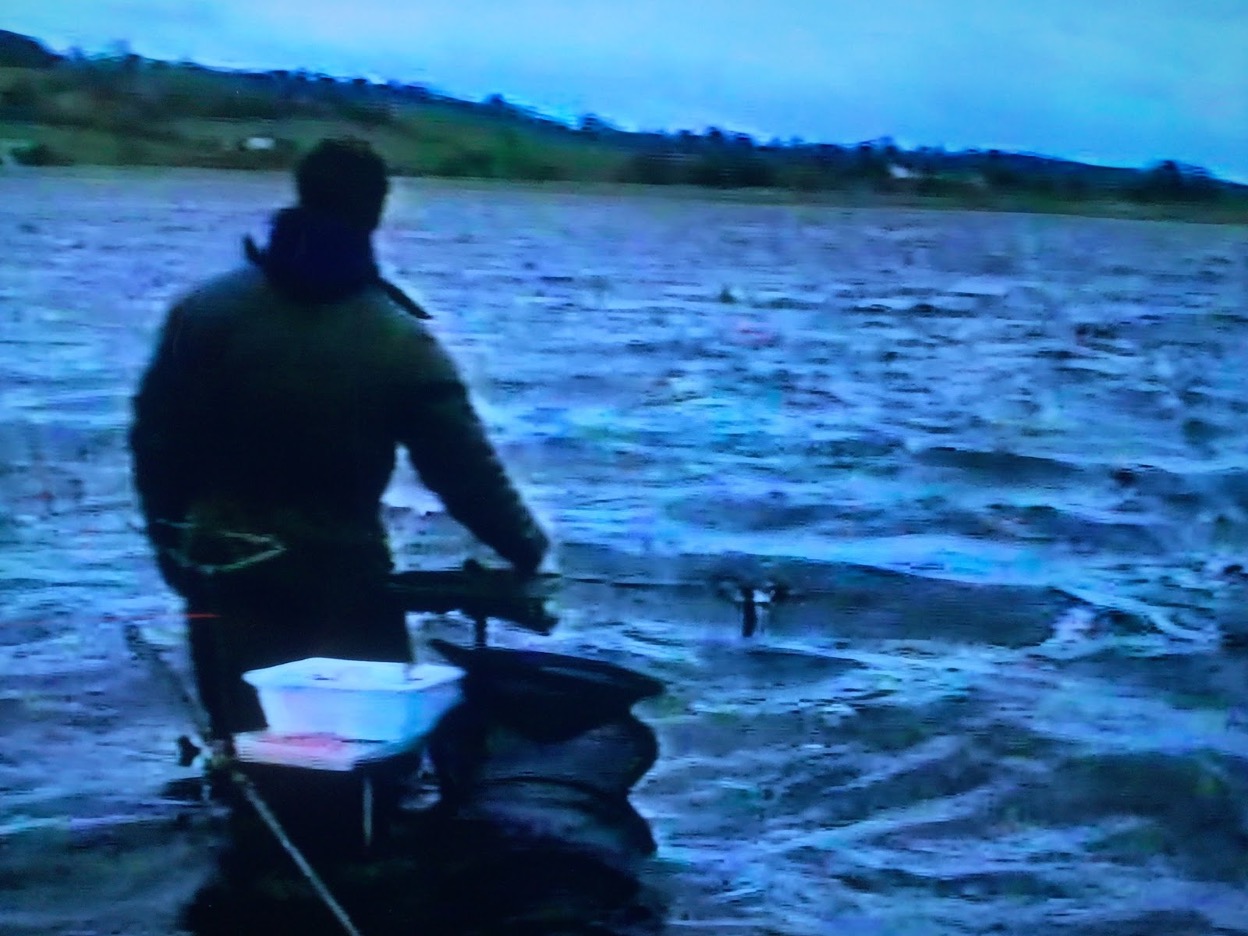
This thirty year old photo shows me, touch ledgering for bream in a typical irish lough. There were times when the waves were a foot high and yet my sunken line and a sensitive fingertip allowed me to keep catching whilst others may have been struggling.
Baits for bream
- Worms. These are often the first thing that comes into mind regarding bream. On their own, or in a ‘cocktail’ with caster or maggot, this is one bait that never seems to fail, especially on wild natural venues.
- Casters. I have just one thing to say… BREAM LOVE CASTERS!
- Maggots. What fish doesn’t like maggots? My experience is that reds work best for bream but that might just be a confidence thing. If you prefer other colours, stick with what you know.
- Dead maggots. A perfect addition to groundbait. Dead maggots do not break up your balls of groundbait prematurely and they don’t crawl away into silt and under stones.
- Bread. Surprisingly floating bread is a very successful method for bream, where allowed. Despite their reputation for liking deep water the fact is that bream will often take baits fished shallow or even on the surface. Don’t ignore bread because this wonderfully versatile bait can easily be made to fish at every depth from the bottom right up to the surface.
- Sweetcorn. This is another staple hookbait that can be all you need on the right day.
- Squats. These are a perfect tiny maggot that can be introduced via groundbait and bream love them. Usually available in red or white they are small enough to keep the fish rooting around without getting overfed.
- Pinkies. A slightly larger maggot than the squat. Available in red, white, and as the name implies also in fluorescent pink, a pinkie on the hook can sometimes get a bite when all else fails.
- Pellets. A banded hard pellet will catch everything that swims these days, especially on commercial waters. Soft hooker pellets or expander pellets are also effective, even on many natural waters where bream have become conditioned to think of them as their primary food source. Micro-pellets can be used with or without groundbait either on their own or as a carrier for maggot, casters and chopped worms etc.
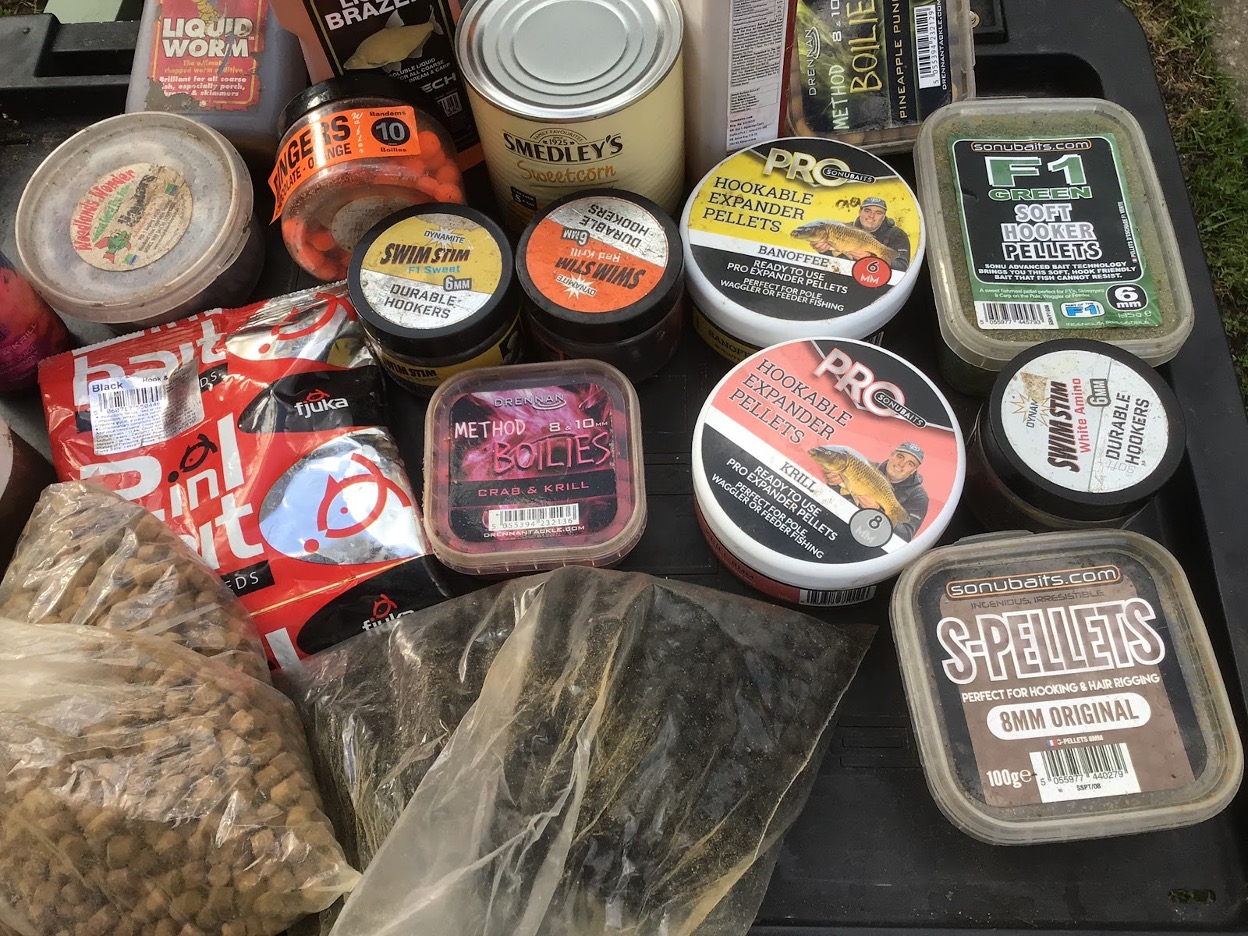
I’ll wager that most of us have an impressive array of pellets, both feed pellets and hooker pellets, along with flavours, additives and pastes. If you are like me I bought them, tried them, and many of them stay firmly in storage, never seeing the light of day. It is an undeniable fact that with regard to some of the novel and avant-garde baits on offer today, more anglers will get caught than fish.
Conclusion
Bream have a lot to offer all across the different disciplines of modern fishing. Increasingly the commercial fishery match anglers are using bream and skimmers to top up their carp and F1 weights during quiet periods of their match. A good bag of silvers is becoming an essential additional requirement for winning.
Natural water anglers will enjoy catching large bags of bream from big lakes and reservoirs, whilst specimen hunters have the opportunity to catch bream that are well over twenty pounds, and we may even see a twenty-three pounder soon.
For pleasure anglers, especially on more natural waters, there is the opportunity to locate the fish, pre-bait a swim, and target a whole shoal of marvellous ‘dustbin lids’. Perhaps you may even do a ton?
FAQs (and one question never asked before.)
I live in a city. Can I catch bream locally without having to travel great distances?
Of course you can. I too live in a very built up conurbation in the West Midlands yet there are a few great bream venues near me. Edgebaston Reservoir right in the middle of Birmingham has for years held a reputation for its bream shoals. After years of neglect, when the trend was for anglers to target commercial fisheries instead, it has just come back on to the radar. A well known angler, James Robbins, made a video just a couple of years ago where he caught a magnificent bag of fish in the 8lb – 9lb bracket. Another venue, the Arboretum in the middle of Walsall is a short walk from the town centre and the housing all around, and that too has also got a reputation for large bream shoals.
How do I find information on places to catch bream?
Check out the fisheries.co.uk website for your local area. There are new venues being added all the time. Also, if you have information about a water that holds bream let us know and we can add it to our database.
My pal reckons that bream will take lures and artificial baits. Is this true?
Surprisingly the answer is yes. There is another video that I have recently seen where an angler stalks bream on a crystal clear canal. It takes some believing but by using tiny artificial lures and casting and retrieving past the shoal he demonstrated what was, for me, an entirely new way of catching bream. Amazing.
What is the UK record bream?
Carp anglers fishing Ferry Lagoon in Cambridgeshire have ‘accidentally’ taken a string of massive bream culminating in a fish of 22lb 12oz. It is thought that this latest fish is the same fish that has been caught at 18lb and 19lb in the past. Carp anglers get to become extremely familiar with all the big fish they catch and recognise them when they get caught again. It is thought that throughout the country many big bream go unreported by carp anglers who prefer to keep quiet about their catches to preserve the sanctity of their venues. However, I hope you don’t all now flock to Ferry Lagoon as not only is it syndicated it is a massive 200 acres. Your chances of finding a record would be minimal because the perceived wisdom is that there may now only be two bream left in the whole of this vast water.
Similar articles
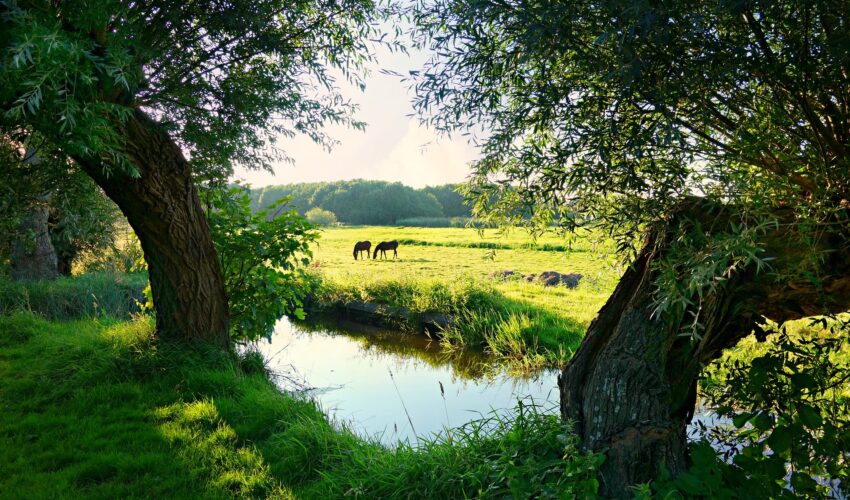
River Fishing – A guide to getting started
Are you thinking of going for a trip to the river in 2025 but find yourself filled with trepidation because you have never fished running water before? Well I want you to relax. Let us take the mysteries out of…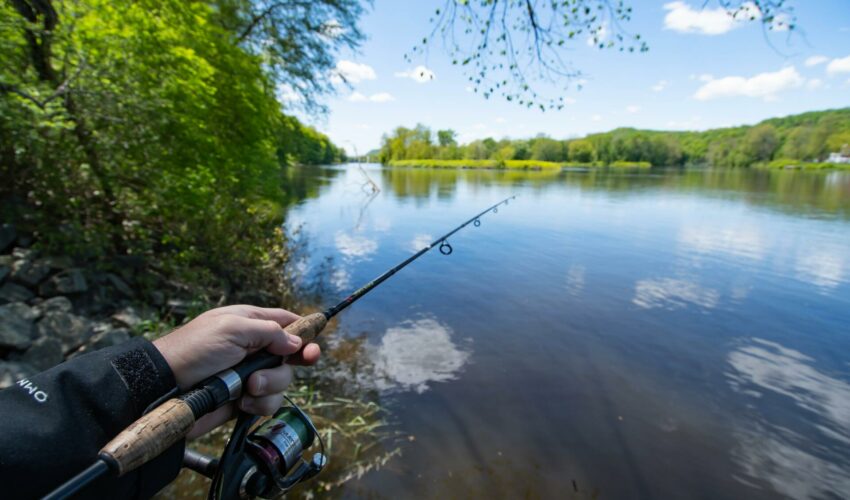
A guide to fishing licences in 2025
Whether you want to become a new angler or you’ve been fishing for years, you will be required to obtain the Environment Agency Rod Licence. In this article we explain what you’ll need if you want to go fishing in…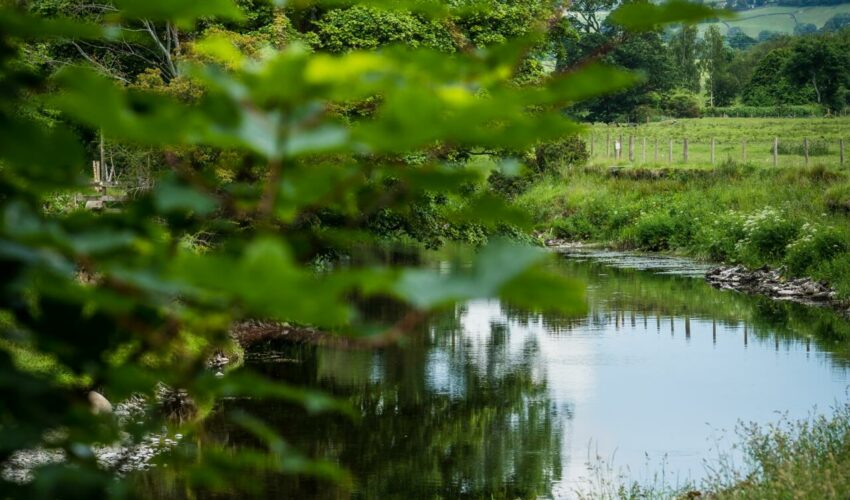
Make the most of the 2025 river season with this in-depth guide to fishing rivers
If you’re new to fishing rivers, or just fancy a change from fishing stillwaters, this guide will help you make the most of the new 2025 river fishing season. With advice on reading the water, what species to fish for…
Our guide to fishing this spring (2025)
With the worst of the weather over (we hope!) and with spring finally here, it’s time to clean out that tackle box and get on the bank for some spring time fishing.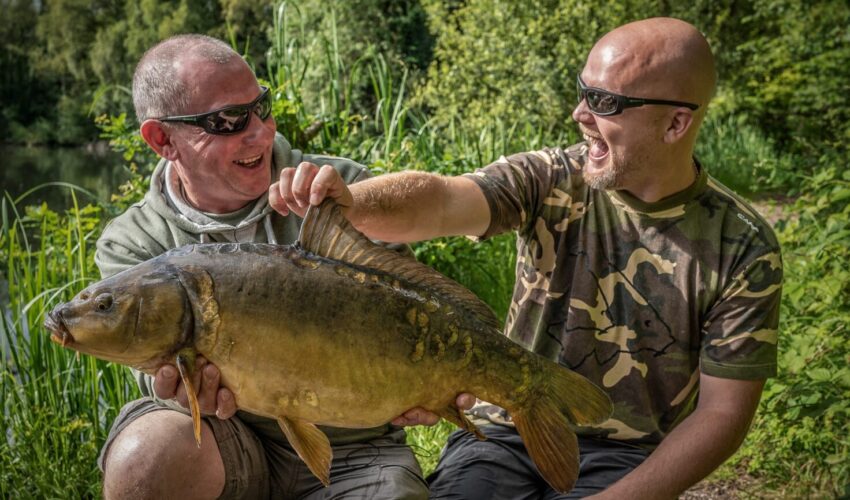
Take a friend fishing
Get ready to hit the water! From April 18th to May 4th, 2025, you can get a free fishing license to take a buddy out and show them what fishing’s all about. Yep, free! It’s all part of the “Take…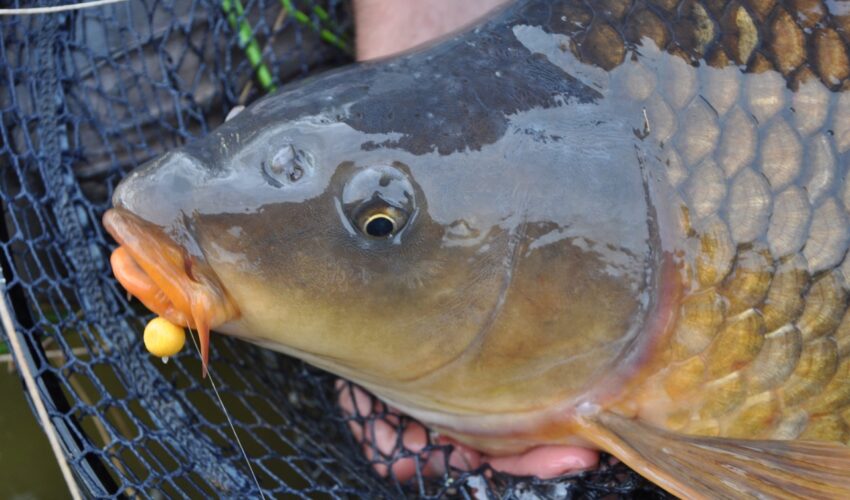
Fishing tips for hard days: How to get more bites
It happens to the best of anglers. Whether conditions are tough, the fish are moody, or our plans simply aren’t working, there are days we struggle. But what can you do to catch fish that seem unwilling to cooperate? There’s…Search by Region or County
Find new places to go fishing in your local area or county by choosing your destination below









Comments